Is a concept like the DZYNE Ascent a realistic prospect, as a future airliner? What limitations exist in such a design – and would you fly in it?
There are many discussions on new technologies for aircraft propulsion today. One problem with some of them, is that they don’t necessarily agree with the aircraft we have today. The development of aircraft airframes and engines have always traveled hand-in-hand. So changing one, or the fuel it burns (or both) could adversely affect the other.
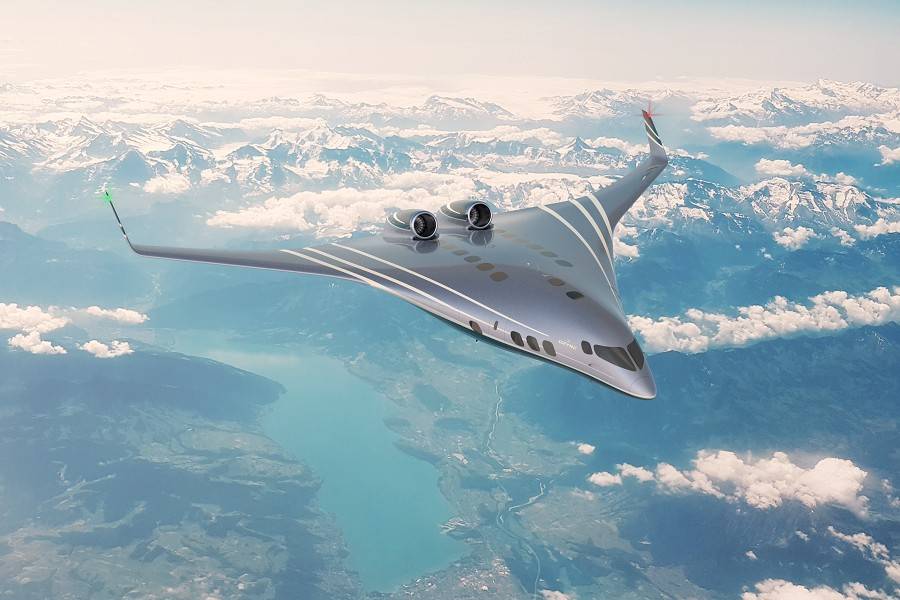
The DZYNE Ascent doesn’t necessarily need a different type of powerplant (or fuel) from what airliners use now. But we have seen how Airbus has been looking at a few different version of a similar design. What is interesting about DZYNE, is that their Ascent isn’t just a pretty shape, it comes with an interior. And the company is giving us some ideas as to how a blended wing body can replace a known, real-world airliner. This is something that has been lacking from Airbus’ design concepts.
DZYNE is a design company, whose projects and products are as diverse as the Ascent and UAVs, and everything in between. The company worked with Mooney in the development and prototype construction of the M10. Unfortunately the company eventually canceled this project. But DZYNE does both studio and technical, systems designs. And the Ascent aims to show how the space that is theoretically available in a blended-wing body, could actually work.
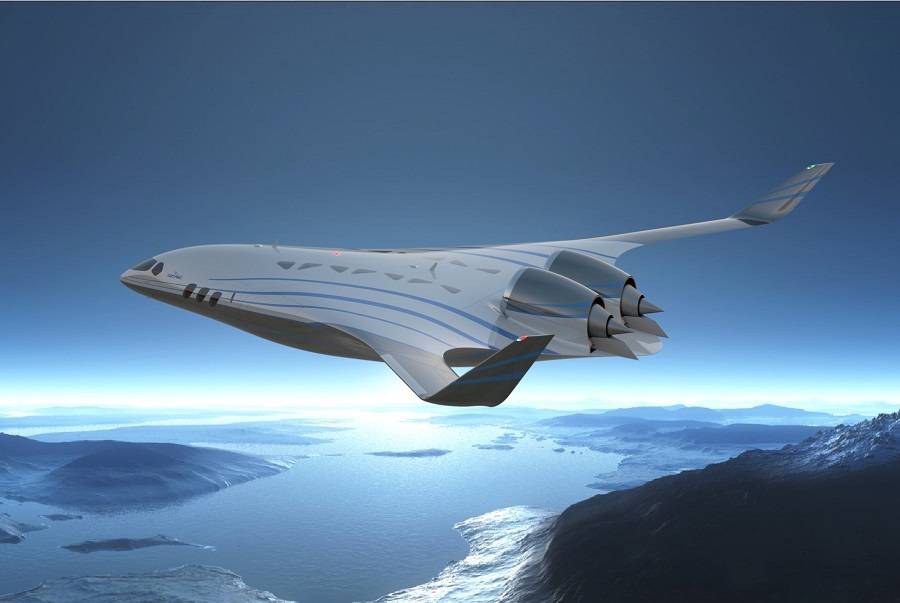
The Applications of the DZYNE Ascent Design
There are two versions of the DZYNE Ascent. The ‘plain’ Ascent is the corporate jet version. DZYNE’s pictures compare this aircraft to a G650. The interior length of the two aircraft seems comparable. And that’s about it. It’s plainly obvious that available space in the Ascent is much larger, both in volume and in floor space. DZYNE claims it has triple the floor space of the ‘tube and wing’ corporate jet.
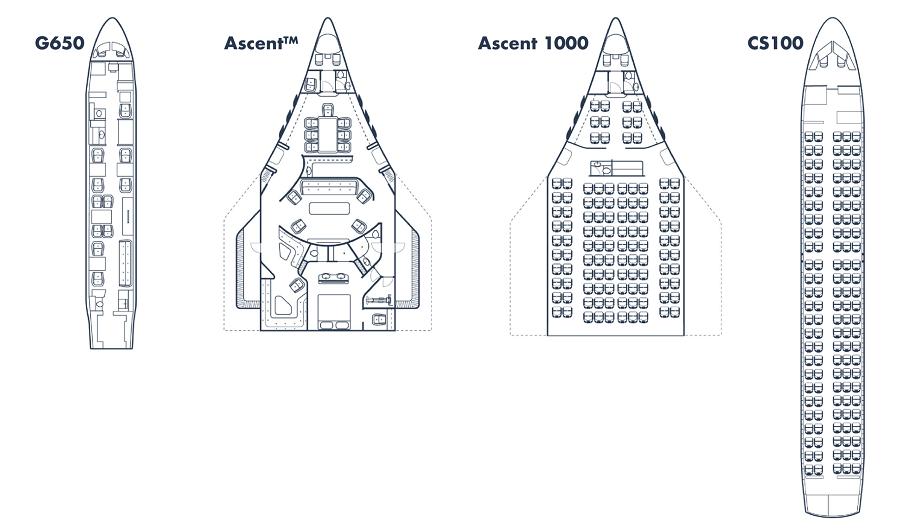
But the really interesting version is the airliner. DZYNE calls this the Ascent 1000. The company compares it to a CS100, i.e. an Airbus A220-100. We have seen twin-aisle, ten-abreast seating airliners before. But not one that is verging on regional, in its size! The Ascent 1000 has seats for 112-120 passengers. But its overall size, compared to an A220, is so much smaller.
So what is the advantage of a design like DZYNE’s Ascent? In a word, efficiency. The lift-producing blended-wing fuselage should work much better aerodynamically. The company believes that the ascent would be 50% more efficient than current airliners of comparable size. And they think it would be 30% more efficient than the best, theoretical all-composite future ‘tube and wing’ airliner designs.
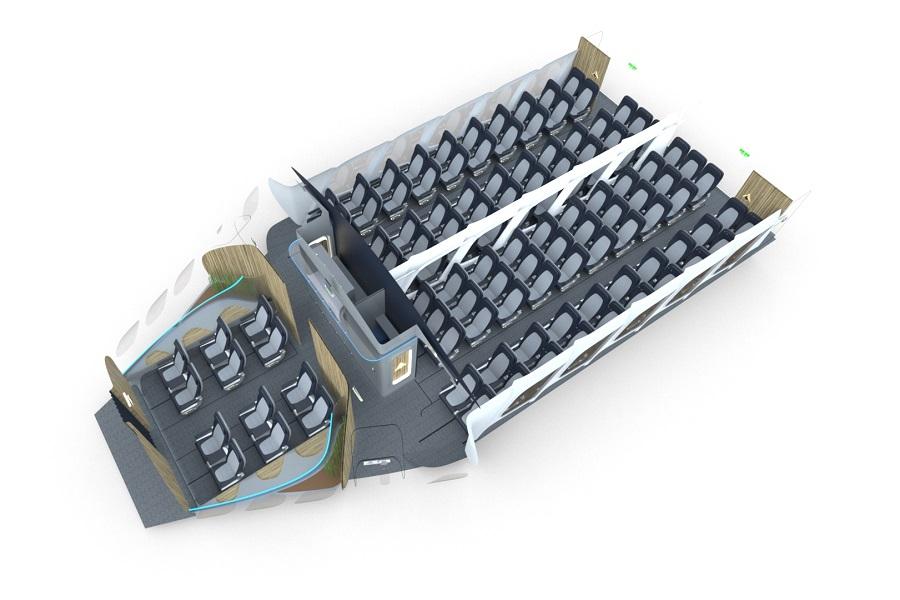
These are bold claims, but as we have seen NASA has been exploring such designs, also for efficiency reasons. NASA’s overall efficiency target gains are actually higher (80%!), but they combine both airframe and powerplant developments – like Airbus. The attraction of the Ascent is that DZYNE claims that it doesn’t need anything particularly ‘exotic’, in terms of its systems. Engines could start out as regular modern turbofans, as we have now.
Could It Really Happen?
The blended-wing body setup is also quieter. Mounting the engines above the fuselage should make a sizable difference, especially in areas with noise abatement rules. However that engine position raises some questions about DZYNE’s Ascent. For instance, will the engines ingest the boundary layer, from the top of the fuselage? And what about icing on the roof of the cabin? We know that the latter can sometimes trouble aircraft with tail-mounted engines.
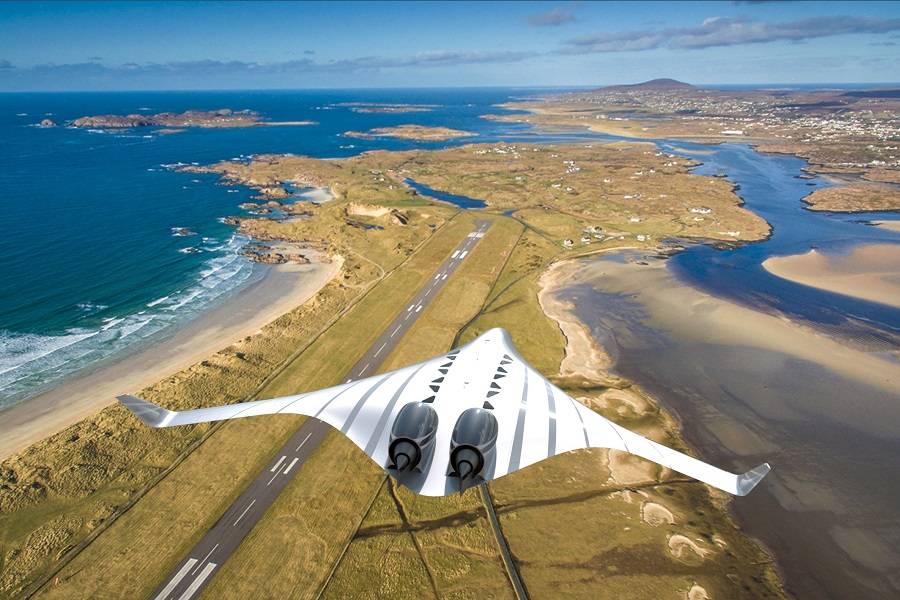
Also, DZYNE doesn’t list the Ascent’s dimensions. Its overall width would probably be very close to an A220-100, because of its shorter wings. This would be an important item to verify. With airports as they stand, a design that requires extra-wide wings would introduce other issues. But because the bulk of the lift seems to come from the fuselage here, the wings don’t look too big.
DZYNE’s Ascent concept dates from the Fall of 2018 – which explains the CS100 reference. This makes this concept older than the Airbus blended-wing body, hydrogen concepts. And in a sense, Airbus’ designs means that someone is following up the idea. Still a few more such concepts would certainly be interesting!
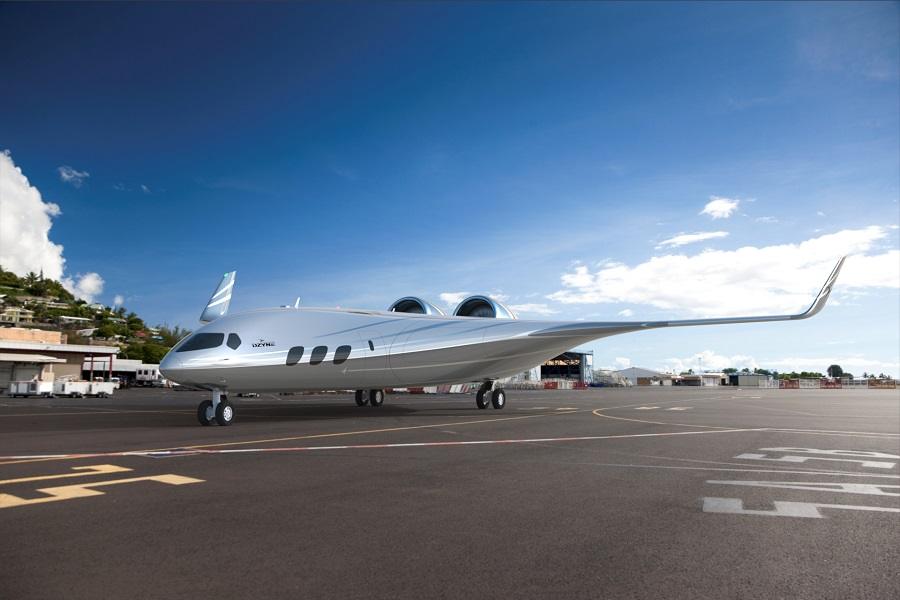
What do you think? Could such a design see the light of day? Or to put it another way: is this design more likely to happen than a future supersonic jet, for instance?




2 comments
Jim Hamilton
The first comment is by, obviously, an intelligent person. On the surface this design looks very much like a “no brainer”. However, the design and, moreover, imementation will be Absolutely cutting edge. I hope it can succeed!
Hamdan Ali Parayil
As an engineer and a pilot , I strongly believe that the design is highly feasible.However we will need to tackle the challenges associated with such a radical design. From a flight safety perspective,I feel that in the event of asymmetric thrust caused by a single engine failure,the aircraft must be able to fly safely with a single engine and regarding the icing problem and boundary layer separation at high angle of attack ,theses factors are gonna strongly influence the flight envelope.
And even if these problems are dealt with , the regulatory bodies must be able to certify the aircraft for commercial use .This could take time for testing and developing the standard operating procedures for the aircraft.
Efficiency ,uncompromising safety and economic flight operation is the priority of today’s aviation industry.